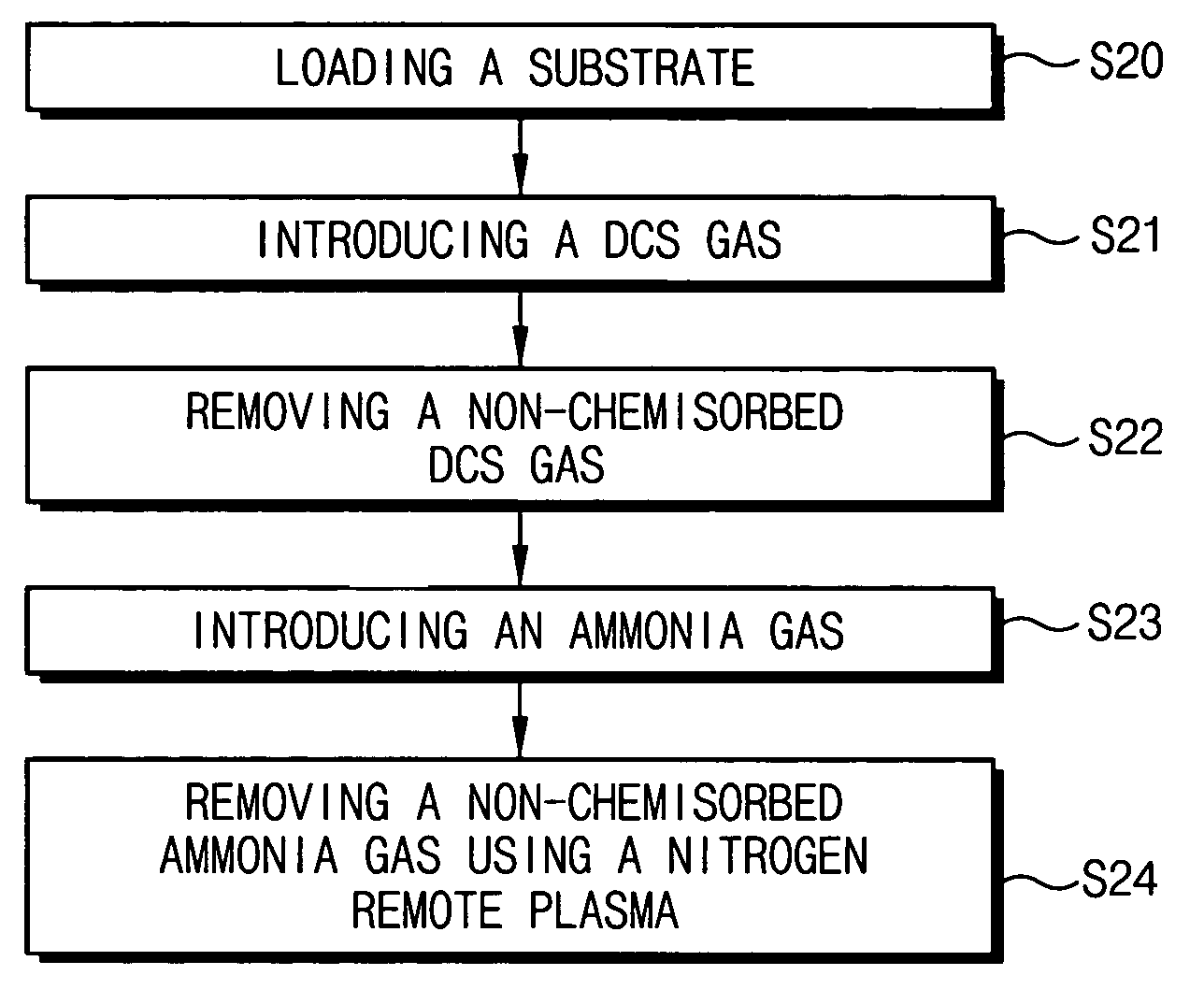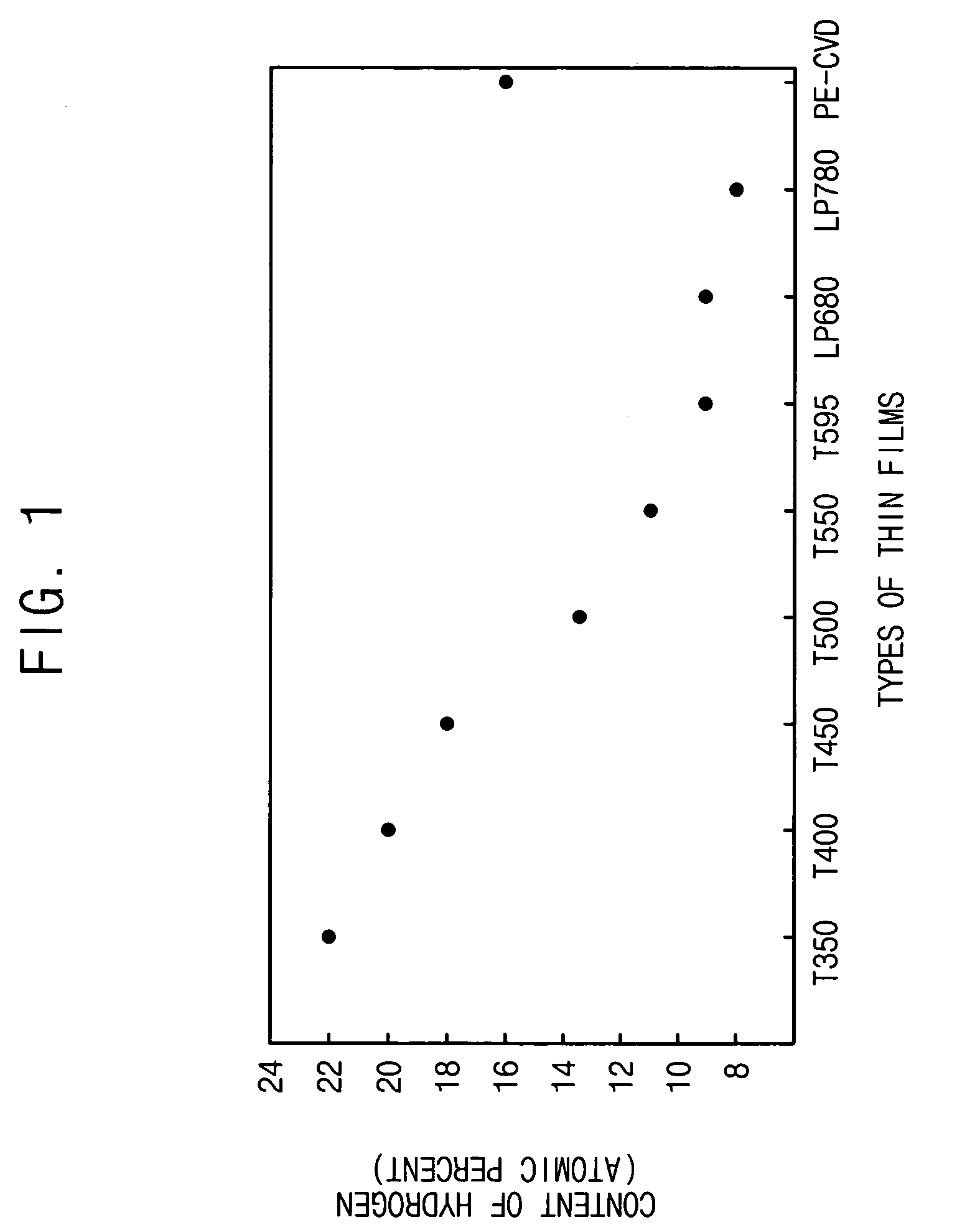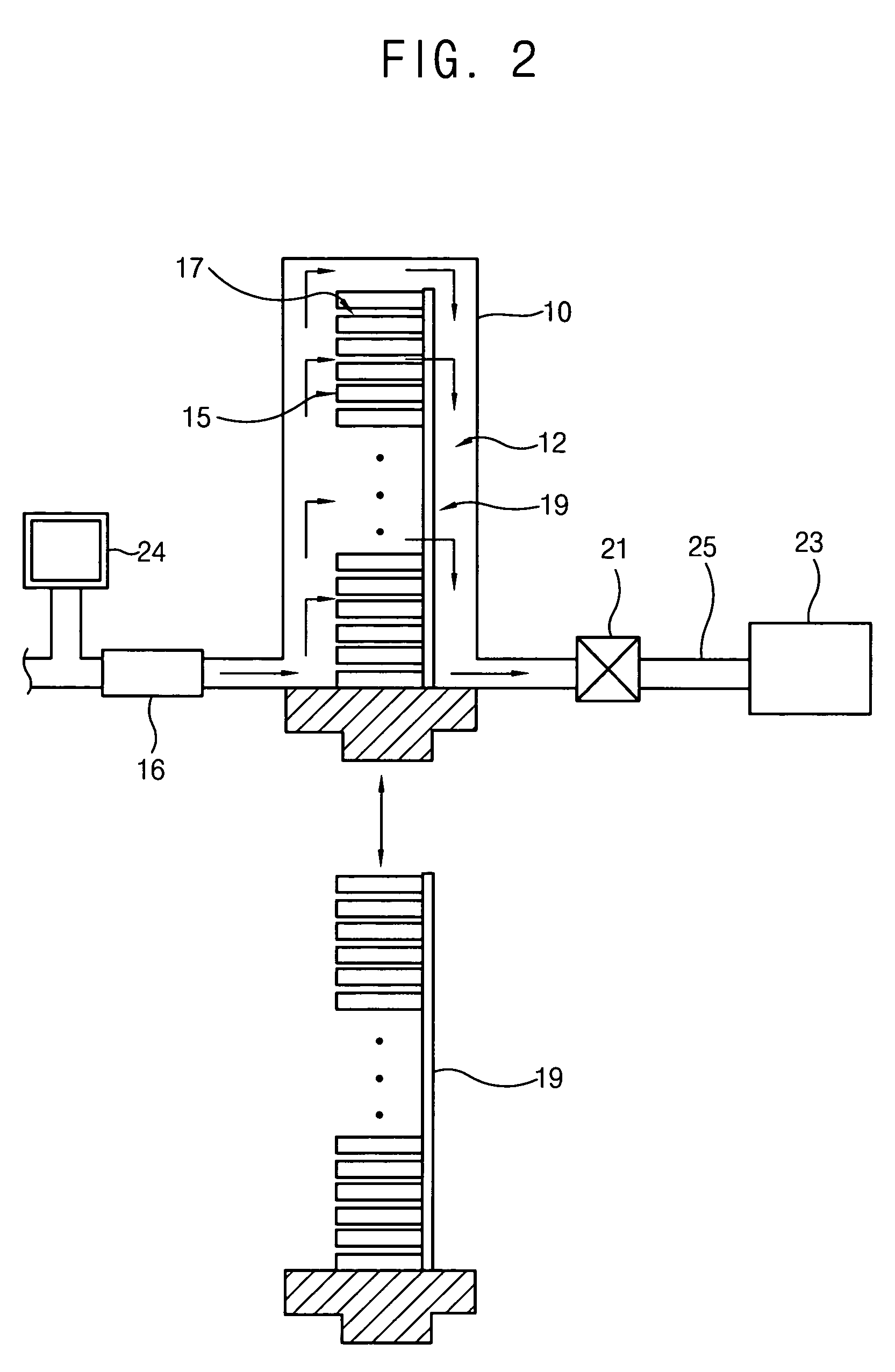Method of forming a layer and forming a capacitor of a semiconductor device having the same layer
a semiconductor device and capacitor technology, applied in the field of methods of forming a layer and forming a semiconductor capacitor having the layer, can solve the problems of deteriorating the characteristics of a semiconductor device, loading effect of the semiconductor device, and conventional chemical vapor deposition process, etc., to achieve excellent insulation properties, reduce leakage current, and low hydrogen content
- Summary
- Abstract
- Description
- Claims
- Application Information
AI Technical Summary
Benefits of technology
Problems solved by technology
Method used
Image
Examples
examples 1 to 4
[0199] Silicon nitride (SiN) layers were formed on substrates using processes substantially identical to those described with reference to FIGS. 8 to 11, respectively. In the processes forming the silicon nitride layers according to the Examples 1 to 4, DCS gases and NH3 gases were provided for about 20 seconds and about 35 seconds, respectively.
example 5
[0200] A hafnium oxide (HfO2) layer was formed on a substrate using processes substantially identical to that described with reference to FIG. 12. To form the hafnium oxide layer, TEMAH was used as a first reactant and ozone (O3) was used as a second reactant. Additionally, an argon plasma was used as a purge gas and as a plasma for removing impurities was applied to remove impurities from the hafnium oxide layer. A deposition ratio was about 0.7 Å / cycle, and the hafnium oxide layer had a thickness of about 40 Å.
PUM
| Property | Measurement | Unit |
|---|---|---|
| temperature | aaaaa | aaaaa |
| temperature | aaaaa | aaaaa |
| temperature | aaaaa | aaaaa |
Abstract
Description
Claims
Application Information
 Login to View More
Login to View More - R&D
- Intellectual Property
- Life Sciences
- Materials
- Tech Scout
- Unparalleled Data Quality
- Higher Quality Content
- 60% Fewer Hallucinations
Browse by: Latest US Patents, China's latest patents, Technical Efficacy Thesaurus, Application Domain, Technology Topic, Popular Technical Reports.
© 2025 PatSnap. All rights reserved.Legal|Privacy policy|Modern Slavery Act Transparency Statement|Sitemap|About US| Contact US: help@patsnap.com



